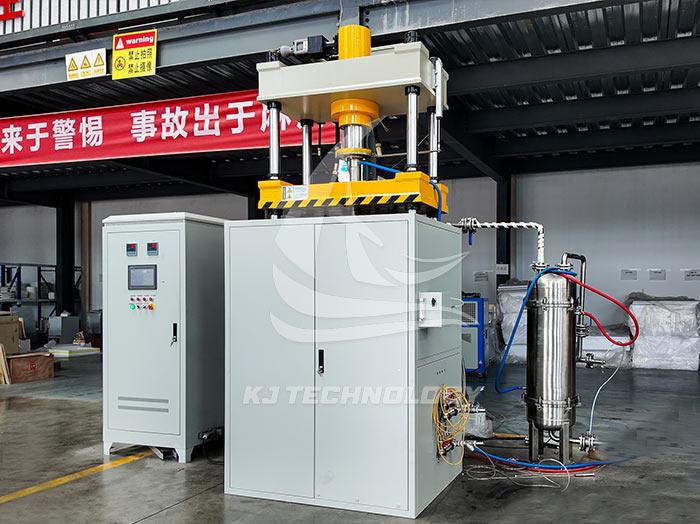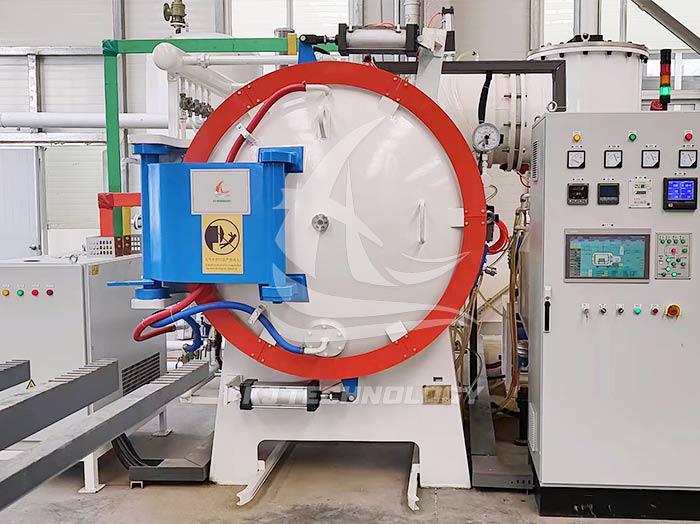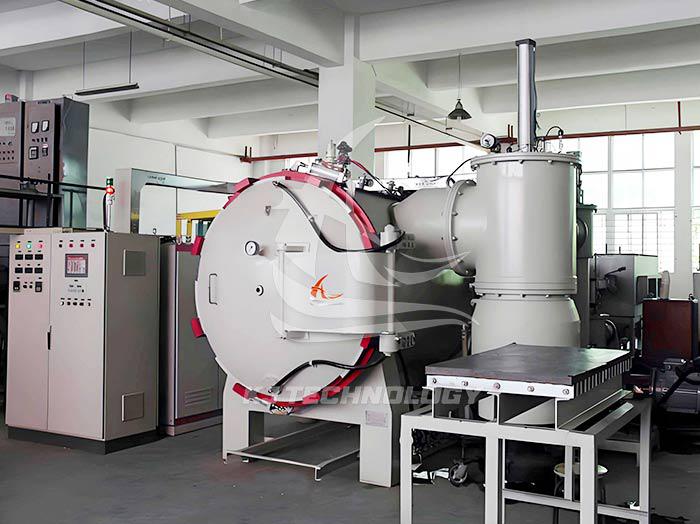What are the application scenarios of electric heating high-temperature vacuum heat treatment furnace?
 06-06-2025 Author: KJ technology
06-06-2025 Author: KJ technology
Electric heating high-temperature vacuum heat treatment furnaces play a key role in multiple high-end manufacturing fields due to their unique process advantages. The following is a detailed explanation of its core application scenarios and technological value:
1. Deep processing of metal materials
Aerospace alloy processing
Titanium alloy/high-temperature alloy: Solid solution treatment and aging strengthening are carried out in a vacuum environment to eliminate the risk of hydrogen embrittlement and improve material strength and toughness (such as the α+β phase zone treatment of Ti-6Al-4V alloy).
Precision forgings: Vacuum annealing is used to eliminate forging stress, reduce grain coarsening, and ensure dimensional stability of parts (such as stress release in aircraft engine blades).
Strengthening of mold steel and tool steel
High speed steel (such as M2, M42): Vacuum quenching+tempering process can obtain a uniform martensitic structure with a hardness of HRC62-65, while reducing surface decarburization.
Hot work mold steel (such as H13): After vacuum heat treatment, its thermal fatigue resistance is improved by 30%, extending the life of the mold.
Powder metallurgy parts sintering
Hard alloy (WC Co): Vacuum sintering at 1400-1500 ℃ suppresses cobalt phase volatilization, reduces porosity to below 0.5%, and increases hardness to HRA92.
Metal Injection Molding (MIM): an integrated process of vacuum degreasing and sintering to achieve high-density molding of complex structural parts (density ≥ 98% theoretical value).
2. Semiconductor and Electronic Device Manufacturing
Silicon based material processing
Single crystal silicon annealing: eliminates oxygen precipitation, reduces dislocation density, and improves epitaxial layer quality in a vacuum environment of 1100-1200 ℃.
Silicon carbide (SiC) wafer: Vacuum heat treatment repairs ion implantation damage, activates doping elements, and increases mobility by 20%.
Ceramic encapsulation and metallization
Ceramic substrate metallization: Vacuum brazing achieves an Al ₂ O ∝/Cu interface bonding strength of ≥ 15MPa, meeting the heat dissipation requirements of high-power devices.
MEMS device packaging: anodic bonding is performed under a vacuum of 10 ⁻⁴ Pa, with a bonding strength of 30MPa and an air tightness better than 1 × 10 ⁻⁹ Pa · m ³/s.
3. Research and development of new energy and nuclear energy materials
Lithium Ion Battery Materials
Three element positive electrode material (NCM/NCA): Vacuum calcination suppresses Li/Ni mixing and increases capacity retention by 5% (after 200 cycles).
Silicon based negative electrode material: The vacuum carbon coating process has increased the Coulomb efficiency from 75% to 90% for the first time.
Nuclear fuel element processing
UO ₂ pellet sintering: Control the oxygen uranium ratio (1.98-2.02) in a vacuum environment at 1700 ℃, achieve a density of 95% of the theoretical value, and reduce the release of fission gases.
Zirconium alloy cladding tube: Vacuum annealing eliminates work hardening, doubling the corrosion resistance (400 ℃/10.3MPa water vapor environment).
4. High end equipment manufacturing field
Gas turbine hot end components
Single crystal turbine blades: Vacuum directional solidification process controls grain orientation, extending creep life by 40% (1100 ℃/250MPa conditions).
Preparation of thermal barrier coating: YSZ coating was prepared by electron beam physical vapor deposition (EB-PVD) in a vacuum environment, with a bonding strength of 60MPa and a thermal insulation temperature difference of 300 ℃.
Precision optical component processing
Annealing of quartz glass: Internal stress is eliminated under vacuum at 1200 ℃, and the birefringence is reduced to 1nm/cm, meeting the requirements of laser gyroscope.
Optical coating: Vacuum ion plating prepares anti reflective film (AR film) with a reflectivity of less than 0.2% (532nm wavelength).
5. Biomedical and Special Materials
Biomedical implants
Titanium alloy orthopedic implants: vacuum plasma sprayed hydroxyapatite coating, with a bonding strength greater than 30MPa and a 50% increase in biological activity.
3D printed cobalt chromium alloy bracket: Vacuum hot isostatic pressing (HIP) eliminates pores, with a fatigue life of up to 10 cycles.
Preparation of special functional materials
Magnetic material (NdFeB): Vacuum sintering+tempering process improves the remanence Br to 1.45T, and the coercivity Hcj>12kOe.
Shape memory alloy (NiTi): Vacuum heat treatment controls the phase transition temperature, and the recovery strain reaches 8%.
6. Summary of Technical Value
The electric heating high-temperature vacuum heat treatment furnace solves the problems of surface pollution, uneven structure, and performance degradation in traditional heat treatment processes through three core advantages: non oxidizing heating, precise atmosphere control, and low pollution environment. In the field of high-end manufacturing, its technological value is reflected in:
Material performance improvement: Key indicators such as strength, toughness, and corrosion resistance have been improved by 10% -50%
Process stability: Product qualification rate increased from 70% to over 95%
Environmental benefits: Reduce the generation of oxide scale (by over 90%), lower energy consumption (30% energy-saving compared to air furnaces)
With the rapid development of industries such as aerospace, semiconductors, and new energy, electric heating high-temperature vacuum heat treatment furnaces are continuously upgrading towards higher temperatures (2000 ℃+), larger sizes (1m+diameter), and more intelligent control (AI process optimization).








